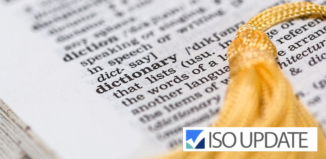Top Five Tips to Ensure Effective Procedures in Your QMS
The ISO 9001 quality management system requires for organizations to write different procedures to prevent non-conformances and to guaranty that specific jobs and processes are carried out correctly.
When writing these effective procedures it is essential to take the following into account:
1. Identify what type of procedure or document needs to be developed.
Different documents are essential in the QMS and each type of procedure or document has a specific role and objective. Some of the most commonly used documents in an ISO 9001 QMS are:
- Manuals: define the general aspects of business management (Quality Management Manual).
- Operating Procedures: Explain how an activity or process unfolds. Usually the most common documents.
- Technical notes and instructions: further develop the content of an activity. They are mainly focused on fieldwork.
- Guides: These are similar to the procedures and technical notes, but with the proviso that they are not binding guidance.
2. Know in detail the structure of a procedure or document.
Organizations need to define a structure and a standard way to write these effective procedures in order to guaranty that they are written in a consistent manner. Knowing the structure will facilitate the process of gathering the essential information necessary to write an effective procedure.
The structure may vary from organization to organization; however, a structure that many organizations use is provided below:
- Home: the first page of the procedure usually includes the title, code, date of writing, version number (or revision), table of contents, total number of pages, name and signatures of the persons who have prepared, reviewed and approved it.
- Purpose and Scope: Describes a summary of the purpose and content of the procedure.
- References: documents that have influenced the development of the procedure are listed.
- Definitions: technical words that are used in the content of the procedure.
- Responsibilities: list of individuals or departments responsible for carrying out the activities described in the procedure.
- Development (or description): describe in detail the activity performed.
- Annexes: everything that is considered important but that takes up too much space to include it in the description section (tables, drawings, diagrams).
3. Review the document with the people that will use it.
In order for a procedure or any document to be effective, it must be understood by the people who will ultimately use it. That’s why it is important for these people to review the document at different stages of its development. Effective procedures have been reviewed directly by the people who will be using it the most.
4. Consider different people’s views and perspectives.
A procedure should not be developed with the view or information of just one person. Most processes or activities that need to be document could be complex and having different perspectives can enrich the procedure. Effective procedures will multiple views into account.
5. Make it simple.
Procedures should not be difficult to read. On the contrary, they must be clear and concise. Sentences must be as short as possible to make sure that it is comprehensive and easy to read. If procedures are never read or understood by the intended audience, they are not likely to serve as an effective tool in any process. Effective procedures need to be readable by everyone involved in the process.
ISO Terms Explained

To the novice quality manager, ISO jargon can be extremely overwhelming. What is an NCR? What do you mean by OFI? Are we certified or accredited? But before you go and pull out your hair, let’s take a moment to go over some of the most frequently used terms and their definitions with regards to ISO and Management System Certification.




